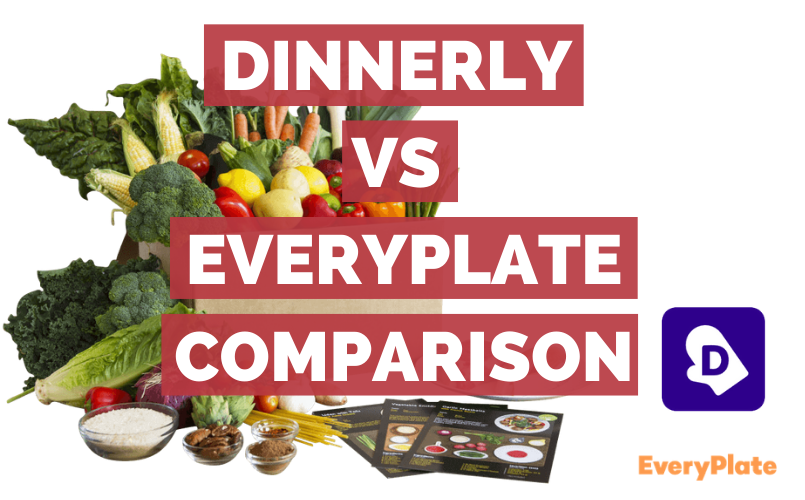A week ago, one of my clients came to me asking for my opinion on meal kit deliveries that were reliably healthy but didn’t cost as much as SunBasket or Blue Apron did.

Sadly, they were prepared to compromise with mediocre ingredients and less tasty food, which is why I’m glad they came to me first.
Contrary to popular belief, you do not have to spend over $5 a cheapest meal kit to be satiated with premium components. Both Dinnerly and Every Plate deliver healthy meals with fresh ingredients at under $5 a plate. Every Plate puts out a good effort, but I prefer Dinnerly as a more cost-effective option.
Cost per Serving
- Dinnerly – under $4.50 per portion
- Every Plate – under $5 per portion
Shipping Cost
- Dinnerly – under $9
- Every Plate – under $9
Minimum Order
- Dinnerly – 2 people and 3 meals a week
- Every Plate – 2 people and 3 meals each week
Number of Recipes on the Weekly Menu
- Dinnerly offers 22 meals each week
- Every Plate – 14 meals per week
Average Cooking and Prep Time
- Dinnerly – under 30 minutes
- Every Plate – around 30 minutes
Number of Meals Catered Each Week
- Dinnerly – three to six recipes
- Every Plate – three to five recipes
Number of Portion Options
- Dinnerly – two and four portions
- Every Plate – two and four portions
Review Summary: Dinnerly and Every Plate are good and cheapest meal kit services dedicated to helping you prepare and cook your meals in under 30 minutes. Every Plate’s menu consists of 14 recipes and can cater to five out of seven days worth of meals each week. I like how their meals cost less than $5, which is quite inexpensive. However, Dinnerly is my top choice because of their extensive high-quality weekly menu, minimal food prep required, and the fact that you have more vegetarian options make it the more cost-effective choice.
Plans & Prices Compared
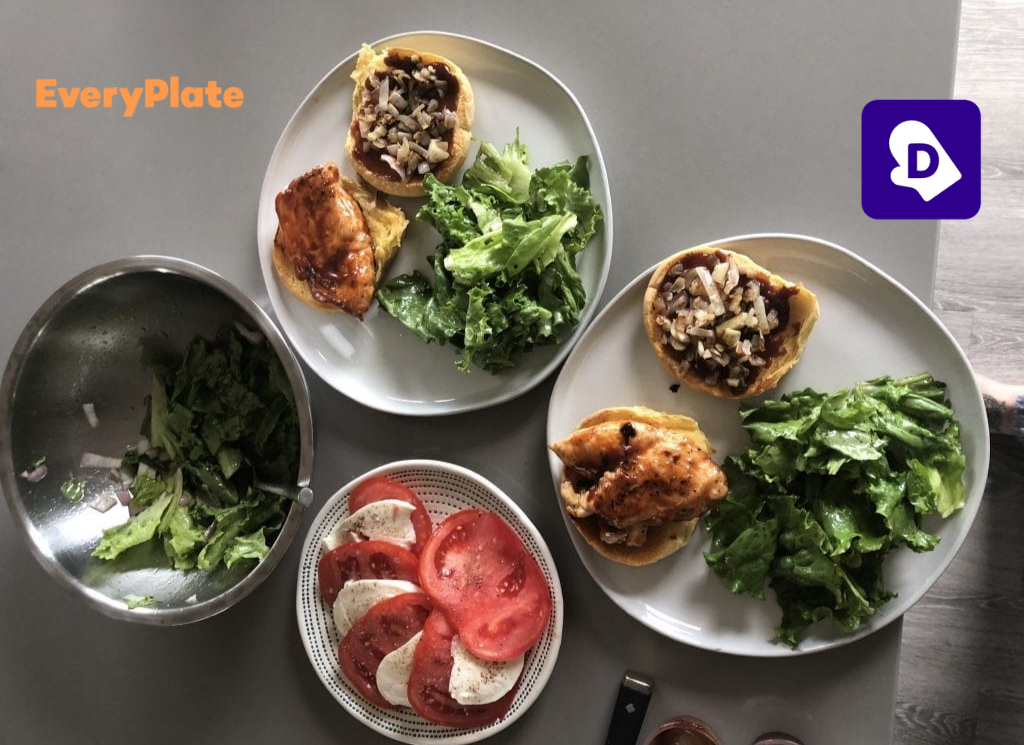
Both Dinnerly and Everyplate cost under $5 a meal plus an additional fee for shipping which is around $9. There are two meal plans to choose from which rely entirely on the number of servings you’ll get: two people and four people portions.

Dinnerly
Dinnerly costs as much as nearly $5 for a minimum order. There are two portion options, and they deliver three to six meals each week.
Two Person Plan
- Three meals – under $5 a serving
- Four – under $4.90 a serving
- Five – under $4.80 a serving
- Six – under $4.60 a serving
Four Person Plan
- Three meals – under $5 each portion
- Four – under $4.70 each portion
- Five – under $4.50 each portion
- Six – under $4.30 each portion
Shipping costs around $9 more on top of your box price.
.





EveryPlate
On the other hand, Every Plate’s price is fixed regardless of which plan you choose. There are also two meal portion options, and you can choose to have meals delivered for three to five days each week.
Cost per serving – under $5.00
You will also have to pay an additional fee for shipping, which costs under $9.
.
My Experience Using These 2 Services
I’m a big fan of meal kit delivery services that allow you to see the weekly menu before you make a commitment. This is the case for both Dinnerly and Every Plate. For Every Plate, you’ll have to hurry and lodge a complaint to Customer Service within 5 days of receiving your meals and you’ll get the same privileges.
I have to say, I preferred Dinnerly’s approach to their menu, which had more variety, and you were also able to select strictly vegetarian menu items.
When it came to food preparation, both services had recipes that were easy to follow and took under 30 minutes to cook. I have to note that Dinnerly review came with less components and a simpler cooking process, so it was less complicated to prepare their meals. Their customer support can be reached via phone, email, or chat.
Best Menu Selection
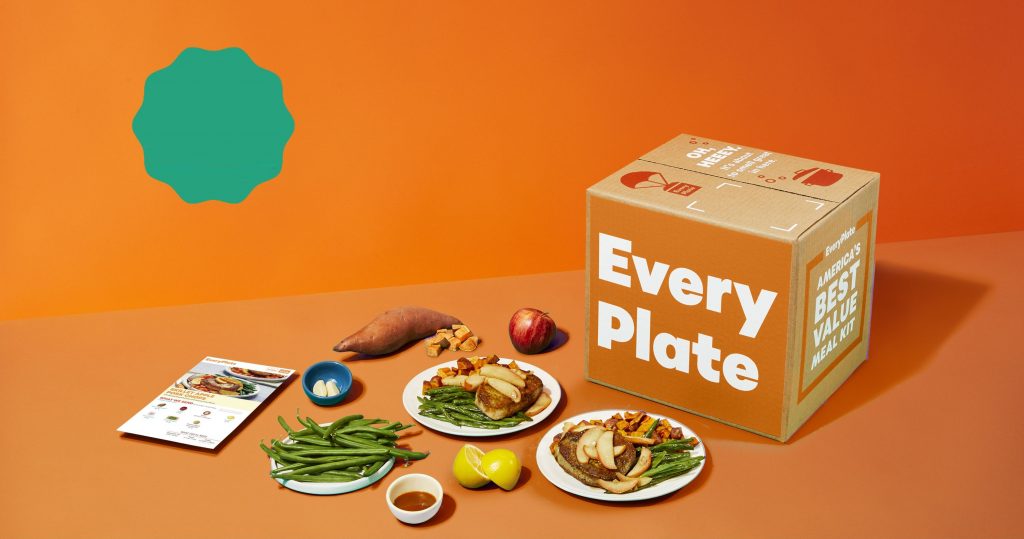

I like how both companies allowed me to view their weekly menus before I was asked to make a payment.
Of course, you had to search for the weekly menu instead of it being shown on the order dashboard, but it was still nice to be able to choose before I was asked to pay.
Both companies don’t cater specifically to dietary restrictions. But they do occasionally put out meals that comply with gluten-free and vegetarian diets.





Dinnerly Menu
The Dinnerly menu consists of around 22 recipes. You also have the option of choosing from an entirely vegetarian menu, which limits your selections to that week’s plant-protein meals.
- There is no set menu for specific diet restrictions. However, no gluten, nut-free, and other diet-specific meals are clearly labeled.
- Their nutritional information can be viewed easily by clicking on each photo.
.





EveryPlate
There are 14 recipes on the Every Plate menu. Each week, the offerings change, which means you’re unlikely to have a repeat performance of your meals.
- There are two meal options on the menu: vegetarian and classic.
- A complete list of nutritional information, including exact components, allergens, and estimated cooking time, are displayed when you click on the recipe image.
.
Packaging
Part of the corners cut to save on meal cost is with the packaging. Unlike other meal kit deliveries, these two come with their quality ingredients tossed together, which means you need to spend some time sorting through your box.
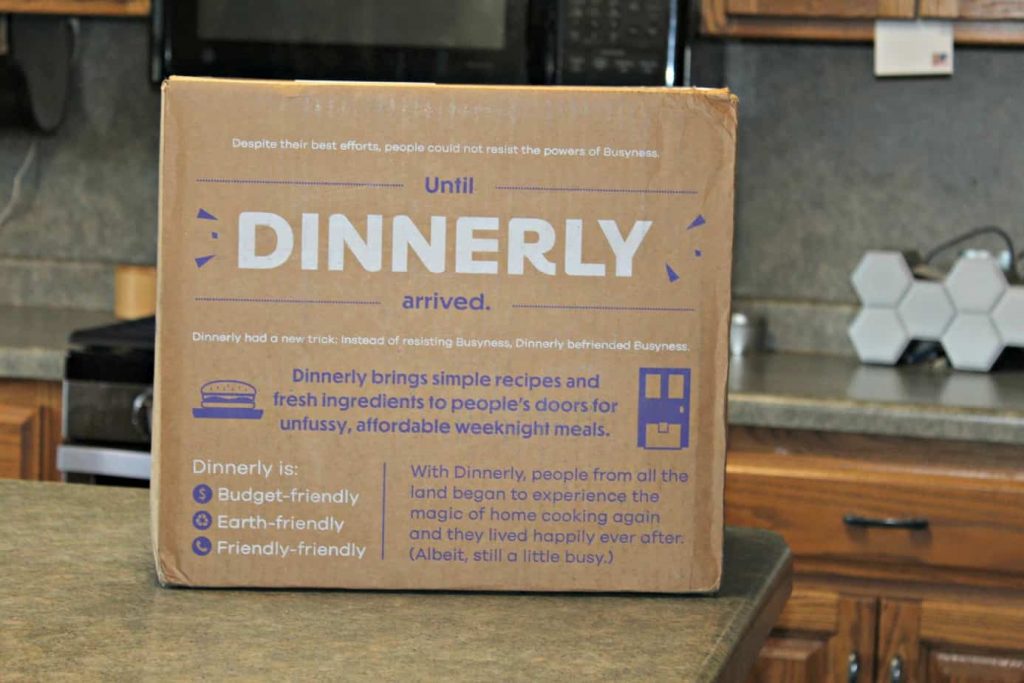
Don’t worry, though; the meat products are tucked at the bottom of the box and are individually wrapped to avoid cross-contamination. Both Dinnerly and EveryPlate stack the protein portion at the very bottom of their box with some ice packs that keep them from perishing.
This may seem less convenient. However, you also have to think about the environmental impact the minimal amount of packaging has over other services who package each recipe individually.





Dinnerly Menu
- Each box comes with a clear and easy to follow recipe card.
.





EveryPlate
- Their recipe cards are digital, which reduces clutter and waste.
.
Quality of Ingredients
A common concern from my clients is the actual quality of ingredients in each of these two companies. The under $5 cost per meal usually raises a few eyebrows as to how corners are cut, and prices are lowered. This is a valid concern considering competitors that boast fresh, quality, and premium components usually come with a price tag of at least $8 per portion.
Luckily, these services are able to lower their prices by cutting down on packaging instead. You’ll also notice that there are less ingredients in their meal kits. This contributes to quicker cooking times and a lower price.
Both Dinnerly meal kit service and EveryPlate are head to head when it comes to the quality of the components they use. You can expect to find the freshest locally-sourced produce, excellent cuts of meat, and delicious, fragrant seafood that is sourced from trustworthy farmers.
I like how with both boxes, you’re contributing to sustainably-sourced, healthy meat, and protein. Their meat cuts are grass-fed and antibiotic-free. The same can be said of their free-range chicken and freshly picked vegetables.
Nutrition Facts & EveryPlate and Dinnerly Taste Review
I come across clients from all walks of life. There are those who are looking for highly nutritious meals that would suit their fitness goals like losing weight, while some are looking for a more cost-effective approach to support their vegetarian lifestyle without having to resort to the same rotation of vegetables every day.
I like how with both companies—although you’re missing a dedicated menu for other dietary restrictions, the nutritional information is readily available and is well-detailed for you to make a decision.





Dinnerly Menu
- Dinnerly’s menu is tagged with labels like gluten-free, veggie, and more. This makes it easier to browse certain meals that would fit your diet.
- Taste-wise, Dinnerly packed better portion sizes and a more prominent flavor profile for most of their meal kits. I like how with less than ten ingredients, I felt full and more than satisfied with the flavor-packed into the meals I prepared.
.





EveryPlate
- The Every Plate menu is a bit more simplified at first glance. However, you’re able to see the meals tagged as Premium or Veggie as well as the time it would take to prepare the recipe.
- Every Plate features more classic flavor profiles that are simpler and more humble compared to Dinnerly.
.
Alternatives to Dinnerly and Every Plate
Despite the lower cost per meal, and the good variety of meals Dinnerly and Every Plate has to offer, I understand they may not be the best choice for everyone.
For example, you might have more specific dietary restrictions that need catering to. Or maybe you’re looking for a better variety of menu offerings like smoothies and desserts. Take a look at some of my favorites to help you consider your options.
Sun Basket – Best Variety
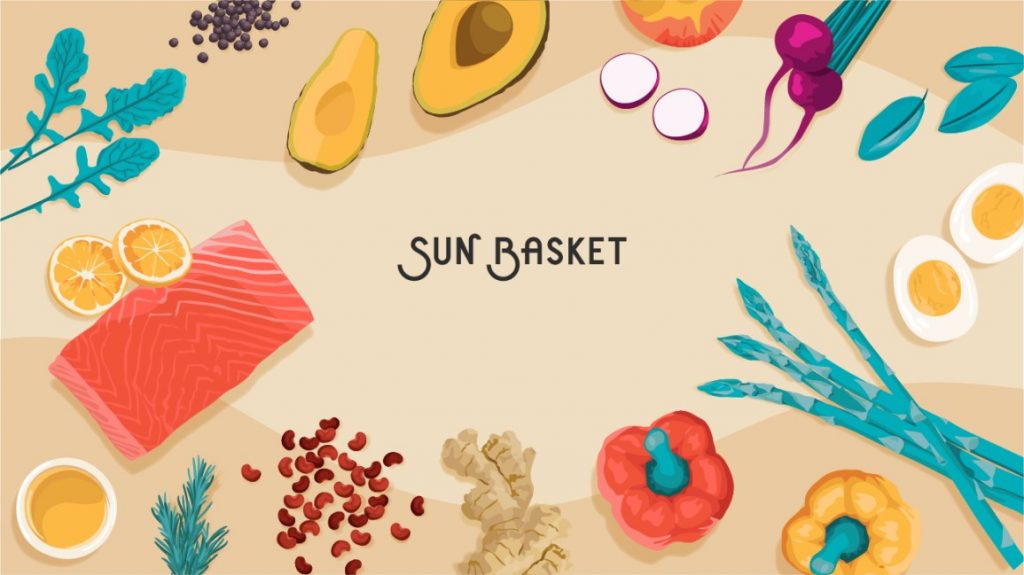
Admittedly, SunBasket is marginally more expensive compared to both Dinnerly and Every Plate. However, the extensive menu selection and the ability to choose from diet-specific menus make it a cost-effective and convenient alternative.
Menu Variety – there are ten menus to choose from, including a ready-to-heat menu
- Chef’s Choice
- Fresh and Ready
- Low-Carb
- Paleo
- Gluten Free
- Lean and Clean
- Vegetarian
- Mediterranean
- Pescatarian
- Diabetic Friendly Meal
Number of Meal Options on the Menu – there are over 15 recipe options for each dedicated menu
Cost per Meal – under $13 on average
Minimum Order – 2 meals for 2 people
Daily Harvest – Best Smoothie Kit Delivery
Daily Harvest features a large menu of healthy smoothie kits and other meal replacements such as flatbreads, chia bowls, and soups.

Menu Variety – Daily Harvest has a menu inclusive of more than just smoothies. Their meal replacement options are all USDA certified organic and cover breakfast until dinner.
- Smoothies
- Harvest Bowls
- Flatbreads
- Soups
- Oat Bowls
- Chia Bowls
- Ice Cream Scoops
- Superfood Snacks
- Lattes
Number of Meal Options on the Menu – from 3 to 17 items
Cost per Smoothie – under $8
Minimum Order – 9 items
Blue Apron – Best for Weight Loss
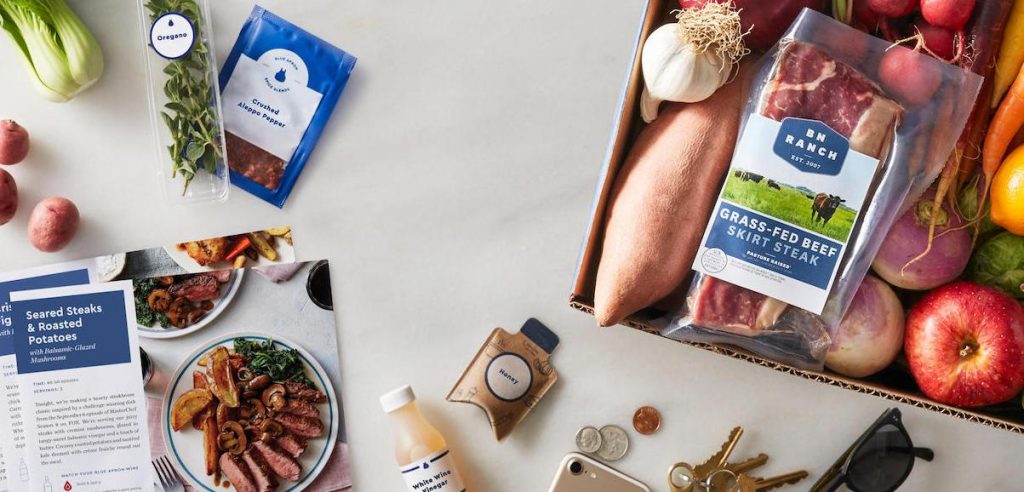
This service is one of the first companies to offer meal kit deliveries dedicated to healthy eating. Recently, they also partnered with Weight Watchers to offer a program that specifically helps its subscribers lose weight.
Their menu is a bit more limited compared to others on this list.
However, they do have a good variety of exclusive spice blends, premium products, and sustainably-sourced ingredients.
Menu Variety – there are four main menus to choose from, including a Weight Watchers program and a kid-friendly menu. You also have the option of adding a wine subscription to your order.
- Signature
- Freestyle
- Vegetarian
- Signature for 4
- Wine Club
Number of Meal Options on the Menu – from 3 to 6
Cost per Meal – under $9 a serving
Minimum Order – two meals for two people
Freshly – Best Pre-Cooked Meals
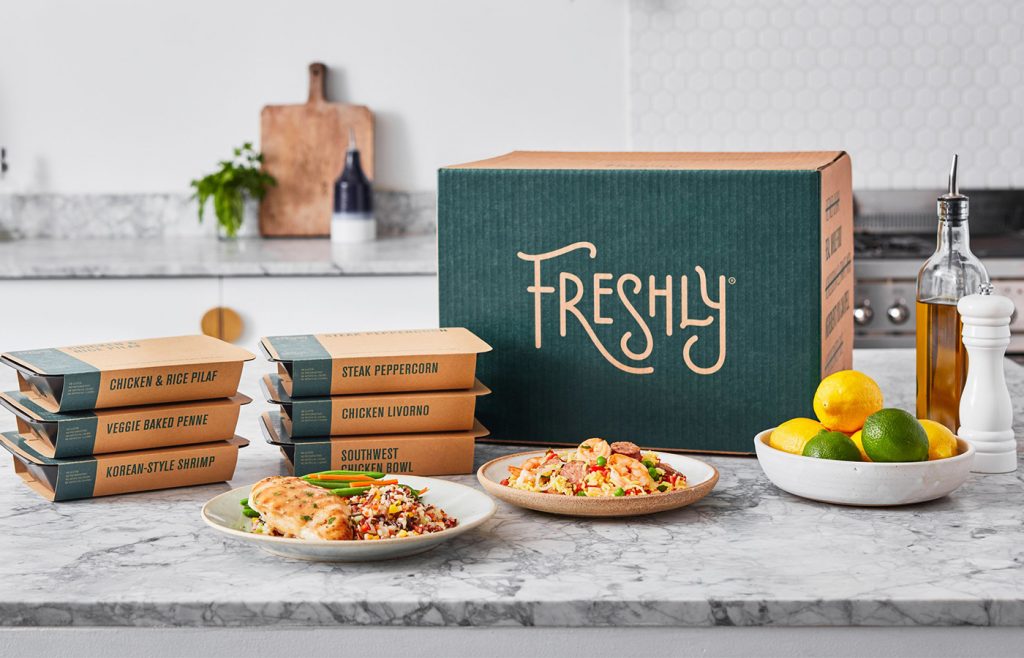
Freshly delivers single-serving individually packed meals that are ready to heat in minutes. It’s an ideal choice for you if you want a service that delivers food that you can keep in your fridge or freezer and take out to heat whenever you need it.
Menu Variety – there is only one available menu on Freshly.
Number of Meal Options on the Menu – around 29
Cost per Meal – under $11.50 Minimum Order – 4 meals per week
Frequently Asked Questions About Dinnerly and Everyplate Review
As I said, Dinnerly and Every Plate tend to raise a few eyebrows with their bold claims of premium components, delicious flavors, yet oddly low under $5 cost per meal. This is why I often get asked several questions whenever I recommend the services to my clients. Below, I’ll answer some of the most important questions I’ve been asked to help ease your mind.
Is Dinnerly Cheaper Than Grocery Shopping?
Dinnerly bills itself as a way for people who want to prepare, cook and deliver quality, homemade food at home. Since it can be as expensive or costly as grocery shopping, we wanted to see if it really is cheaper than ordering food from restaurants or grocery stores. Dinnerly takes all the work out of ordering delivery from restaurants for people who don’t have time to cook, and takes all the work out of cooking for people who have time but just don’t feel like cooking at the end of the day.
It offers standard and premium delivery options depending on how much you order and who you are ordering from. In my first order, I ordered dinner from 20 different restaurants in New York City and Houston, Texas. The delivery fee I paid was $2.99 and the delivery distance was 20 miles. For my second order, I ordered dinners from 1,700 restaurants in 27 cities in all 50 states and 11 countries, and delivery distances were 400 miles for standard deliveries and 600 miles for premium.
Is Dinnerly Worth the Money?
Would you pay for Dinnerly if it got it right the first time? Dinnerly (which is free for now, though you can always upgrade to $9.99) promises to help you create perfect home-cooked meals. Is it worth the dough? Let’s start by talking about the merits of cooked food, which are much more complicated than someone making a meal of fried fish. A lot of factors go into making something taste good, and cooking skill is one of them. You want to cut a certain amount of salt, not cook a certain amount of fat. There are a lot of variables to take into account.
Enter the folks behind Dinnerly or Marley Spoon, a team of people who have “over a decade of culinary experience and are passionate about sharing great food.” The idea is to do a lot of the hard work for you. All you have to do is decide what to cook, then choose a time and temperature. The program uses all sorts of data about the cooking process—temperature, moisture, nutrition, how much you might be eating later—to create a customized cooking plan. All you have to do is put it in the oven, or put it on the stove, or whatever.
Is Dinnerly Good for Weight Loss?
In 2013, someone actually lost weight via the app. After tracking their diet for a month, Amanda Lafrenière, a 30-year-old real estate agent from Santa Clarita, CA, lost a whopping 17 pounds. That’s three pounds a week, and she credits the app with helping her succeed—even without any strict food restrictions. (To see what she ate, check out this story in the New York Times.)
An estimated 50 percent of Americans are overweight, and Lafrenière has to keep her weight in check. “My weight fluctuates around 140 pounds, which I would prefer to be around 120 to 125. Most people, though, are not like me,” she says. “I was thinking that if this new way of tracking my meals was not only good for my health, but also for my weight, then I would be OK.
Is EveryPlate and Dinnerly Same Company?
No, EveryPlate and Dinnerly are not the same company, although they do share some similarities in their business models and offerings. Both EveryPlate and Dinnerly are meal kit delivery services that provide customers with pre-portioned ingredients and recipes to cook meals at home. They aim to offer affordable meal options, making them accessible to a wide range of customers.
However, they are operated by different companies. EveryPlate is owned by HelloFresh, a well-known meal kit company that operates in several countries. On the other hand, Dinnerly is owned by Marley Spoon, another prominent player in the meal kit industry.
While both EveryPlate and Dinnerly focus on providing budget-friendly meal solutions, there may be differences in their menu options, recipe variety, and customer service, as they are managed by separate entities. Customers interested in trying either service should review their respective websites to compare the available meal choices, pricing, and other features to determine which one best suits their preferences and needs.
Is Dinnerly in the USA?
Certainly! Yes, Dinnerly is available in the USA. It’s a meal kit delivery service that lets people in the United States enjoy easy and affordable home-cooked meals. With Dinnerly, you get pre-portioned ingredients and simple-to-follow recipes, making cooking at home a breeze.
Dinnerly offers a diverse selection of meal options each week, and they deliver everything you need right to your doorstep. The best part is that their meals are designed to be quick and easy to prepare, perfect for busy individuals or families.
You can sign up for a subscription with Dinnerly and personalize your weekly meal choices based on your dietary preferences and the number of servings you need. People love Dinnerly because it provides a cost-effective solution for those looking to enjoy tasty and convenient homemade meals in the USA.
Everyplate vs Blue Apron
EveryPlate and Blue Apron are both popular meal kit delivery services, but they have some notable differences in their offerings and approach.
EveryPlate is known for its affordability, offering simple and budget-friendly meal options. The service provides customers with pre-portioned ingredients and easy-to-follow recipes to prepare meals at home. EveryPlate focuses on delivering value without compromising on taste, making it appealing to cost-conscious individuals and families.
On the other hand, Blue Apron offers a more diverse menu with a broader range of recipes and ingredients. It emphasizes high-quality, sustainably sourced ingredients, and caters to a variety of dietary preferences, including vegetarian and pescatarian options. Blue Apron’s approach is centered around culinary exploration and introducing customers to new flavors and cooking techniques.
While EveryPlate may be more budget-friendly, Blue Apron aims to provide a gourmet cooking experience with a wider selection of recipes. Ultimately, the choice between EveryPlate and Blue Apron depends on individual preferences, dietary needs, and the desire for culinary adventure versus simplicity and affordability.
Dinnerly vs Home Chef
Dinnerly positions itself as a cost-effective option, appealing to individuals seeking affordability without compromising on flavor. The service provides recipes with a minimalist approach, utilizing fewer ingredients for efficient and straightforward meal preparation. From a nutritional perspective, Dinnerly maintains a commitment to balanced meals, ensuring that essential nutrients are present despite the simplicity of the recipes. The service adheres to the scientific principles of portion control, aiding individuals in managing their calorie intake and promoting healthier eating habits.
Home Chef, in contrast, offers a more expansive and customizable menu, allowing customers to choose from a diverse array of recipes based on their preferences and dietary requirements. This emphasis on personalization aligns with scientific principles that recognize the variability in individual nutritional needs. Home Chef accommodates diverse dietary restrictions and preferences, fostering a more tailored approach to meal planning. The option for protein swaps adds an extra layer of flexibility, catering to specific nutritional goals.
From an environmental standpoint, both services address the issue of food waste by providing pre-portioned ingredients. However, the environmental impact of packaging practices may vary. The materials used, recyclability, and sustainability efforts contribute to the overall eco-friendliness of each service.
In terms of user experience, Dinnerly’s straightforward recipes may appeal to those with time constraints, while Home Chef’s variety and customization options cater to a broader range of tastes. Taste preferences are inherently subjective, and both services prioritize delivering flavorful meals to enhance the overall dining experience.
In conclusion, the choice between Dinnerly and Home Chef hinges on individual priorities. Dinnerly excels in providing a cost-effective and efficient solution, ideal for those with budget constraints and a preference for simplicity. On the other hand, Home Chef’s focus on customization and diverse menu options suits individuals seeking a more personalized and varied culinary experience. Both services contribute to the overarching goal of promoting home-cooked meals, emphasizing convenience, nutrition, and environmental consciousness.
What Are the Weaknesses of Dinnerly?
While Dinnerly offers numerous benefits, it’s important to acknowledge its weaknesses, which include limited recipe variety, basic ingredients, and potential for recipe repetition.
One notable weakness of Dinnerly is its limited recipe variety compared to some other meal kit services. While Dinnerly rotates its menu weekly, offering a selection of recipes, the options may be more limited compared to other meal kit companies. This can lead to a lack of diversity in meals over time, potentially resulting in boredom or dissatisfaction with the service.
Another weakness of Dinnerly is the simplicity of its ingredients and recipes. While simplicity can be appealing for some customers seeking quick and easy meals, it may not meet the preferences of those looking for more gourmet or complex dishes. Dinnerly tends to use basic ingredients and straightforward cooking techniques, which may not satisfy individuals with more adventurous culinary tastes.
Furthermore, Dinnerly’s emphasis on affordability means that it may not always prioritize premium or specialty ingredients. While this helps keep costs down for customers, it may also result in a lack of variety and creativity in the meals offered. Customers seeking higher-quality or more unique ingredients may find Dinnerly’s offerings to be somewhat limited.
Additionally, some customers have reported experiencing issues with the quality of ingredients received through Dinnerly. While the company strives to provide fresh and high-quality ingredients, there have been instances where customers received produce that was not up to par or meats that were not as fresh as expected. This inconsistency in ingredient quality can detract from the overall dining experience and lead to dissatisfaction with the service.
Another weakness of Dinnerly is the potential for recipe repetition. Due to its rotating menu and limited recipe options, customers may find themselves repeating meals frequently, especially if they subscribe to the service long-term. While some repetition is inevitable with any meal kit service, Dinnerly’s limited menu may exacerbate this issue for some customers.
In conclusion, while Dinnerly offers affordability and convenience, it also has its weaknesses, including limited recipe variety, basic ingredients, potential for ingredient quality issues, and recipe repetition. Customers should carefully consider these factors when deciding whether Dinnerly is the right meal kit service for their needs and preferences.
Yes. It’s very easy to cancel your Dinnerly subscription. You simply have to go to your account and click Cancel my Subscription. However, make sure you cancel before the next week’s renewal period if you don’t want a box to show up at your doorstep when you least expect it.
Dinnerly makes it easier to prepare your meals at home by including whole foods and premium ingredients. Their recipes are crafted by professional chefs and reviewed by dieticians to guarantee the correct nutritional information is displayed.
Yes, Every Plate is owned by HelloFresh. The company was recently launched to provide consumers with a cheaper alternative to the HelloFresh program without skimping on the quality of ingredients and nutrition.
Final Thoughts. Which is better: Dinnerly vs EveryPlate?
I applaud EveryPlate for their effort to make healthy meals easily accessible while maintaining premium ingredient integrity and supplying their subscribers with sufficient nutritional information to make an informed decision about their meals.
One aspect in which I believe it beats Dinnerly is their use of digital recipe cards instead of printed ones which minimizes waste.
However, I have to say that Dinnerly’s slightly lower cost per meal, wider menu variety, more prominent flavor profiles, and more diet-inclusive menu make it ultimately more worth the cost.
